There are numerous beautiful cities in Puglia to visit but my favourite is undoubtedly Lecce. The capital of the province of the same name in the ‘heel’ of Italy, the city of Lecce is often called the ‘Florence of the South’ due to the abundance of Baroque architecture in its historic centre. The city can trace its history back to Roman times, remnants of which can still be seen today. There are many things to see in Lecce and the great part is, these sights can easily be visited on a leisurely walk. In the map below, I’ve created a walking route around the most important sights in Lecce. This can be done in a day but I recommend spending a few days in Lecce to immerse yourself in its historic treasures, food and vibrant atmosphere.
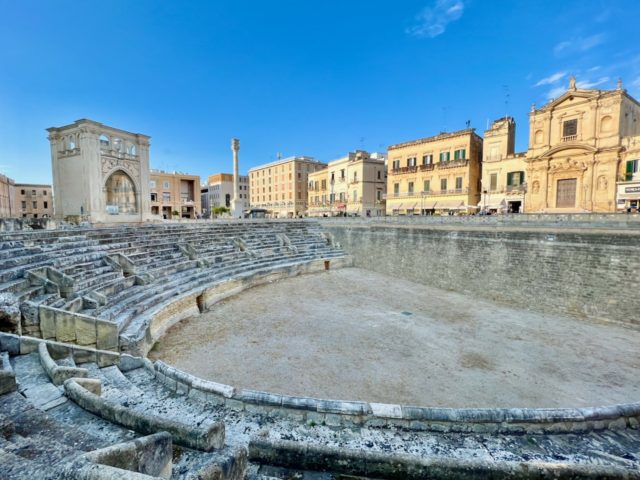

Lecce walking route
Note: the purple pins represent the main attractions in Lecce. The orange pins denote other attractions worth a visit should you have time. The headings of each place described below follow the same colour codes.
In my book, Lecce is the most beautiful city in Puglia and an absolute must-visit. If you’re a fan of architecture and/or art history, you’re in for a treat! The Baroque architecture, with its intricate carvings and rich detail, is plentiful and resplendent but you’ll also find numerous examples of Gothic, Renaissance and Rococo styles. Add to that an impressive Roman amphitheatre, charming alleys, lively squares and a terrific culinary scene, and you have a city that’s definitely worth taking a closer look at.
Note: most of the churches are free to enter, however, there’s an entrance fee of EUR 9 for the city’s most important churches. This ticket can be purchased online and includes entry to the Duomo (Cathedral), Basilica of Santa Croce, Santa Chiara and San Matteo churches, and the Museum of Sacred Art.
Here are the most important things to see in Lecce on a walk around the old town (following the route above):
Porta San Biagio (Gate of St. Blaise)
Kick off your exploration of Lecce at one of the city’s three historic gates: Porta San Biagio. This imposing Baroque-style gate features a towering archway guarded by huge columns on each side. From here, stroll down the atmospheric Via dei Perroni, with its many restaurants, shops and grand mansions.
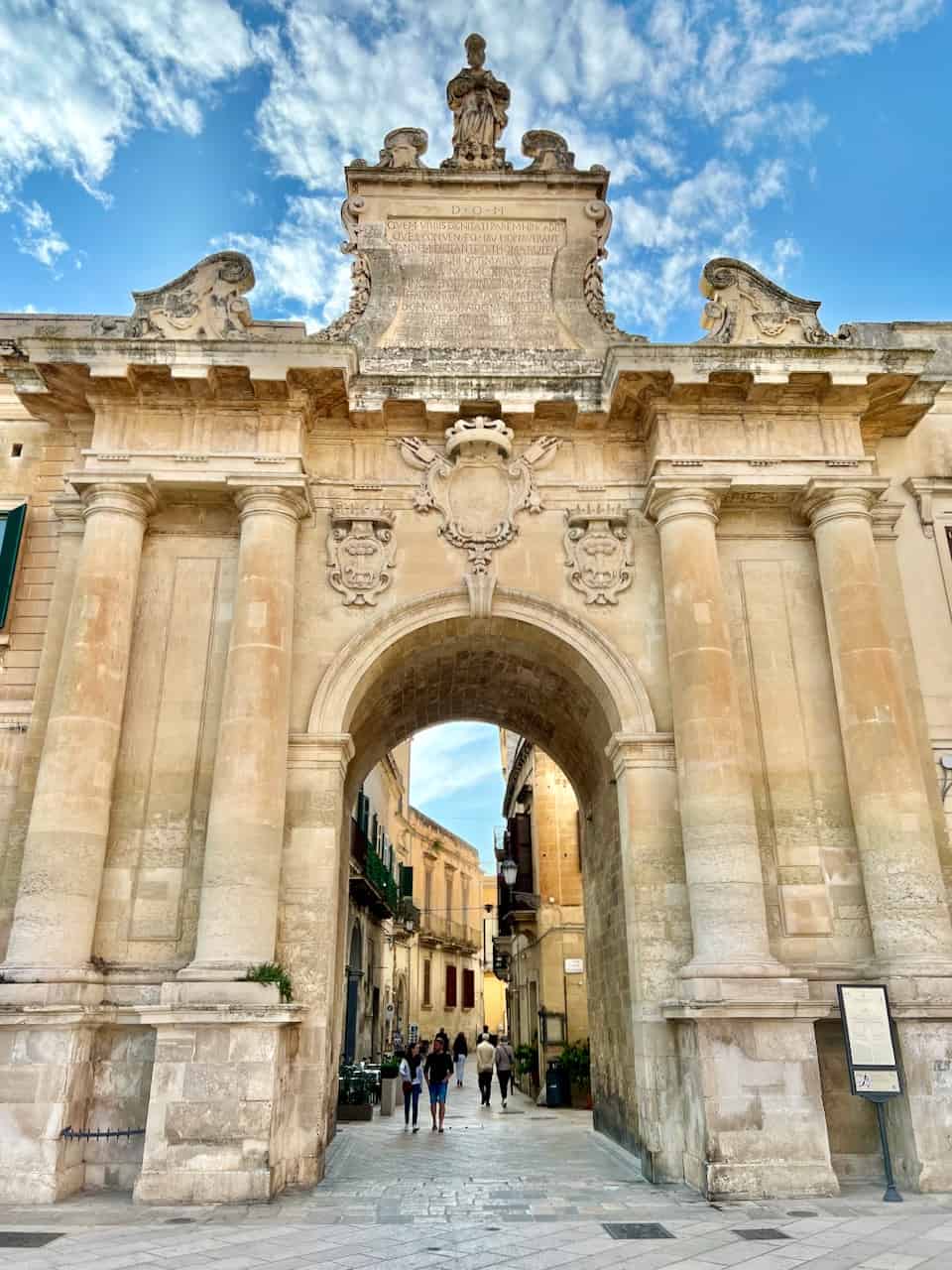
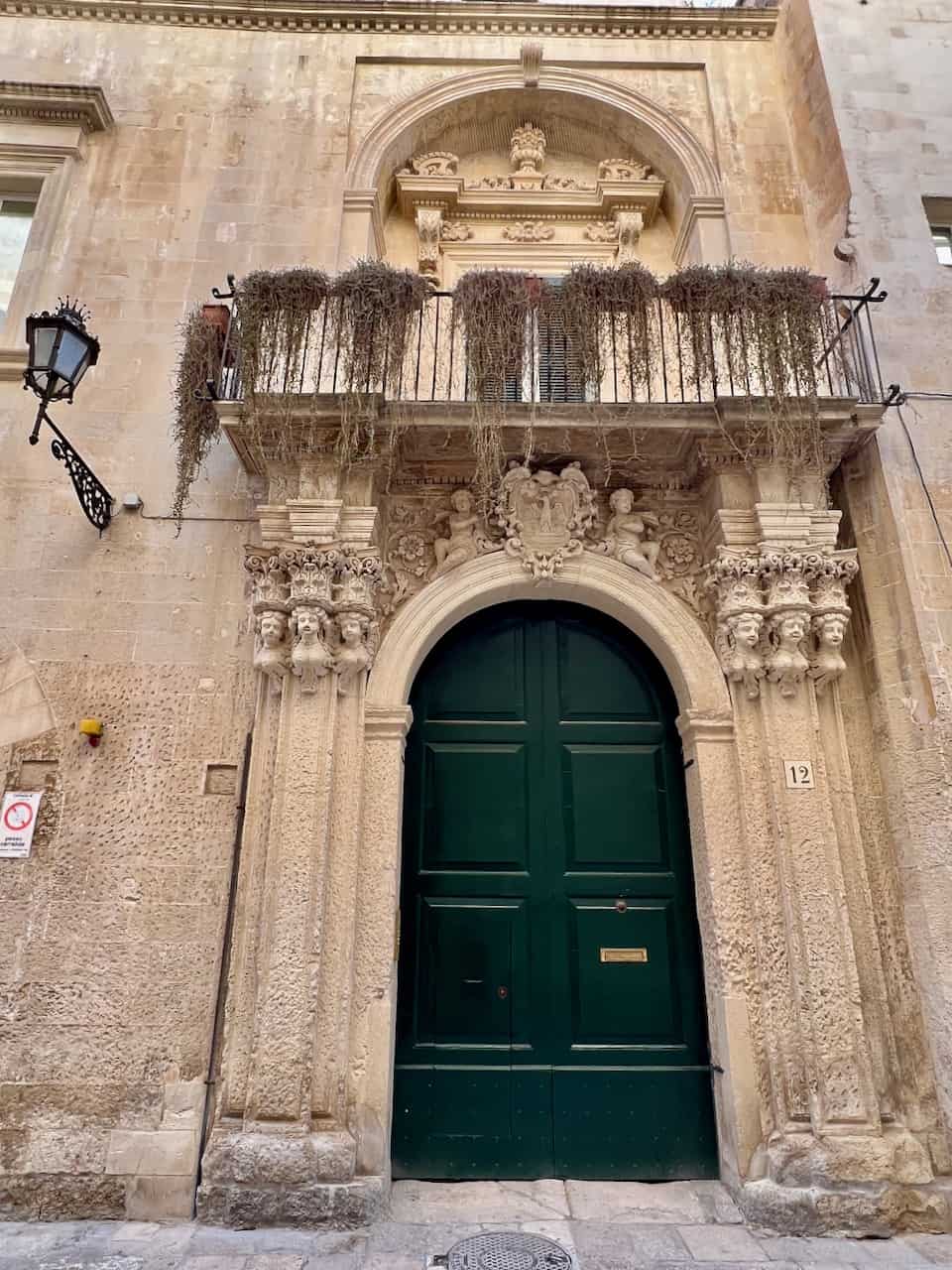
Teatro Romano
Lecce boasts two Roman theatres, the Teatro Romano and the amphitheatre (2nd century AD). The Teatro Romano is just off Via dei Perroni and is an interesting detour if you have time for a visit.
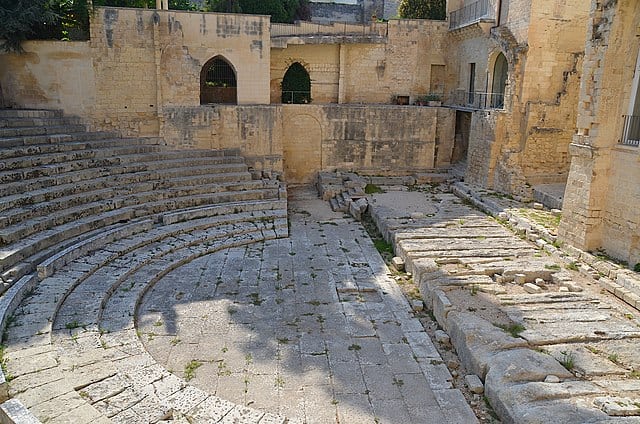
Chiesa di Santa Chiara (Church of St. Clare)
Your next stop is another gem: the Chiesa di Santa Chiara. This 17th century church, with its elegant façade featuring impressive columns and floral embellishments, is quite a sight. Step inside to admire the extravagant interior. The leafy square across the road, with its cafés and restaurants, is a lovely place for a drink or meal.
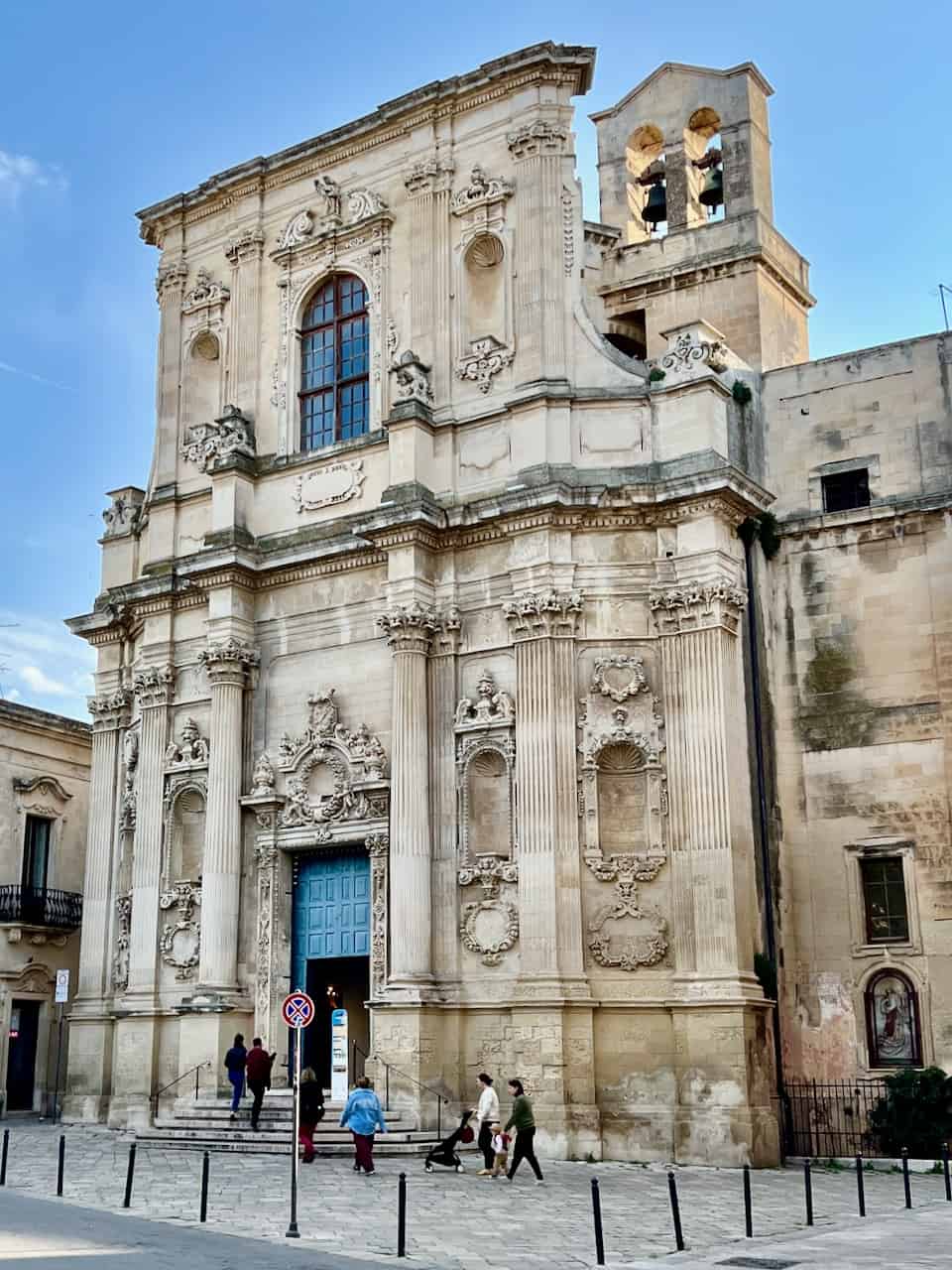
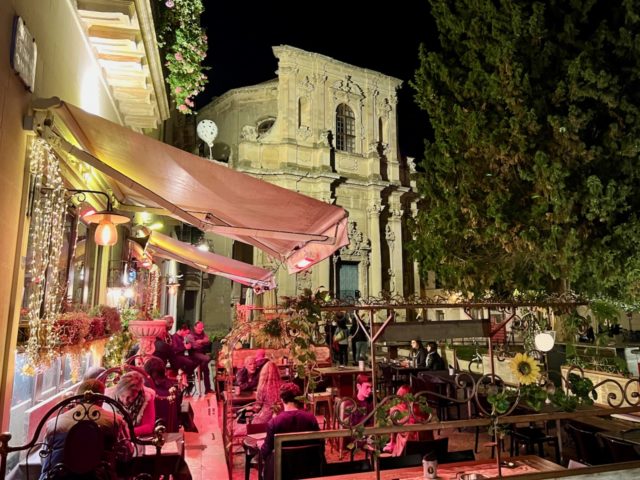
Chiesa di San Matteo and Castello Carlo V
A little detour from the walking route takes you to Chiesa di San Matteo, with its curved façade, a rather unique feature among Lecce’s churches. A short distance further takes you to the 12th century Castello Carlo V, with its formidable walls and archeological excavations.
Roman amphitheatre
The 2nd century AD Roman amphitheatre is one of the top attractions in Lecce. In Roman times, this venue could accommodate up to 25,000 people! Only a small portion of it remains today but it still makes for an incredible sight. Adjacent to the amphitheatre, you’ll find two other historic monuments: the column of St. Oronzo (built to mark the end of the Appian Way, an ancient road that linked Rome with southern Italy), and the Palazzo del Sedille (a 16th century mansion with Gothic and Renaissance influences).
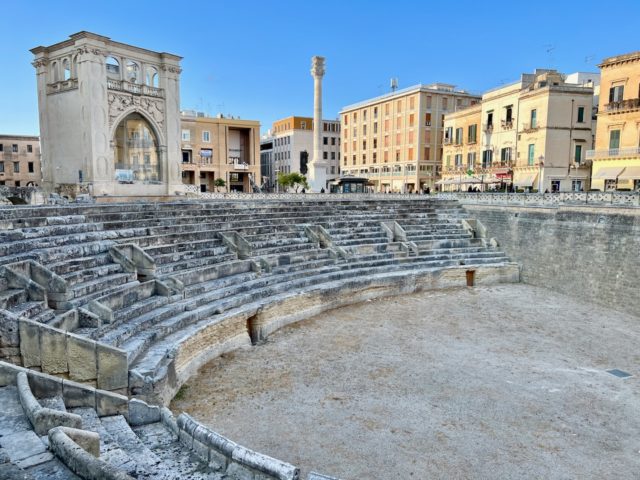
Palazzo Carafa o delle Paolotte
From the amphitheatre, head northwest to the Palazzo Carafa o delle Paolotte. Originally a monastery founded in 1500, the palace was restored in the 18th century and features a beautiful Rococo façade.
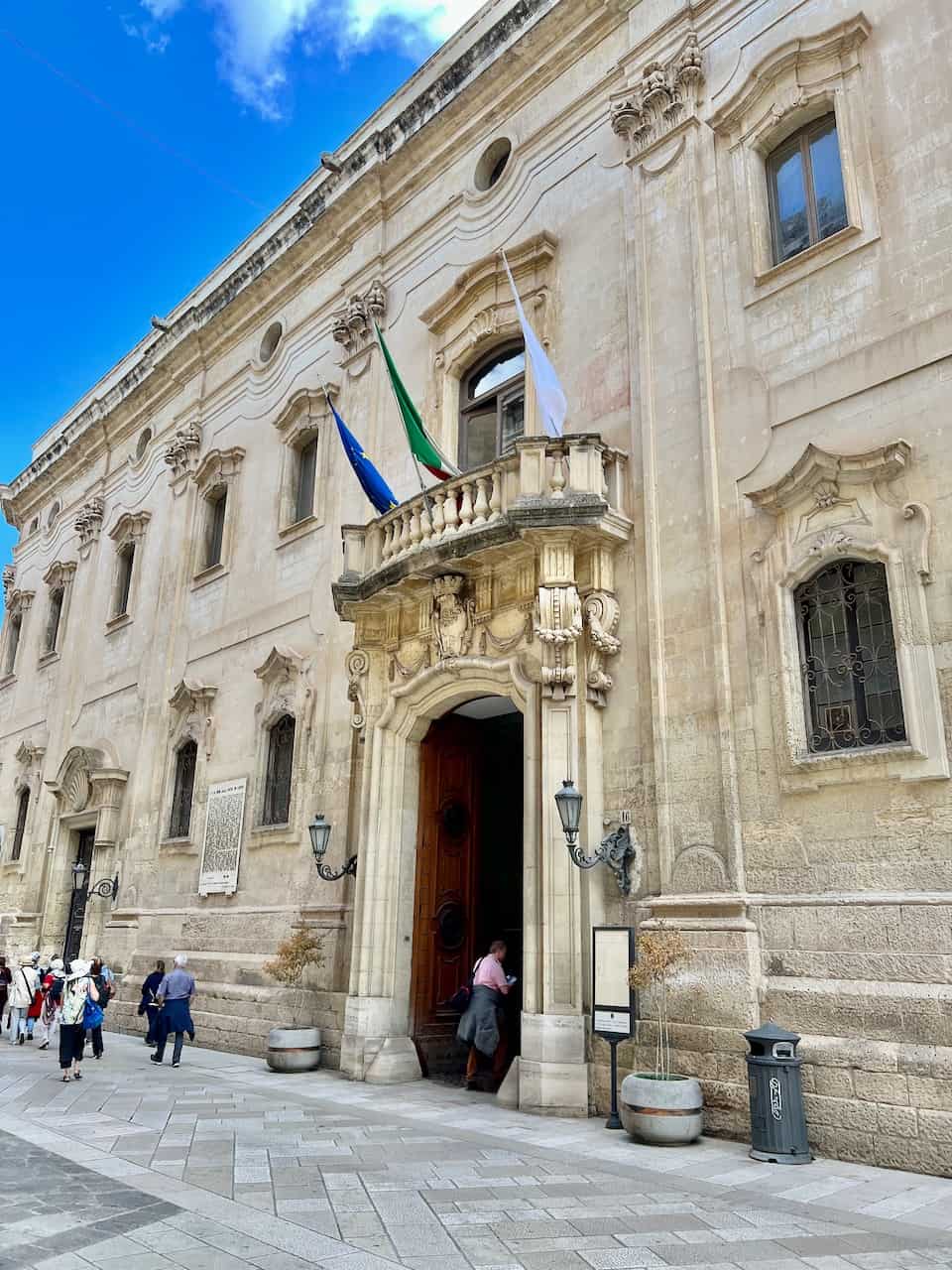
Read more about the best places to visit in Puglia
Basilica di Santa Croce (Church of the Holy Cross)
Continue your walk along Via Giacomo Matteotti and turn left at Via Umberto I. You’ll pass the Jewish Museum, an underground museum that traces the history of Jews in medieval Lecce.
Your next stop is the Basilica di Santa Croce. This ornate Baroque church is one of the top attractions in Lecce. Its stunning exterior is simply breathtaking but don’t miss the interior as well! Next door, you’ll find the Palazzo della Provincia di Lecce, the offices of the provincial government. This is a gorgeous building best seen when its richly decorated façade reflects the colours of the sunset.
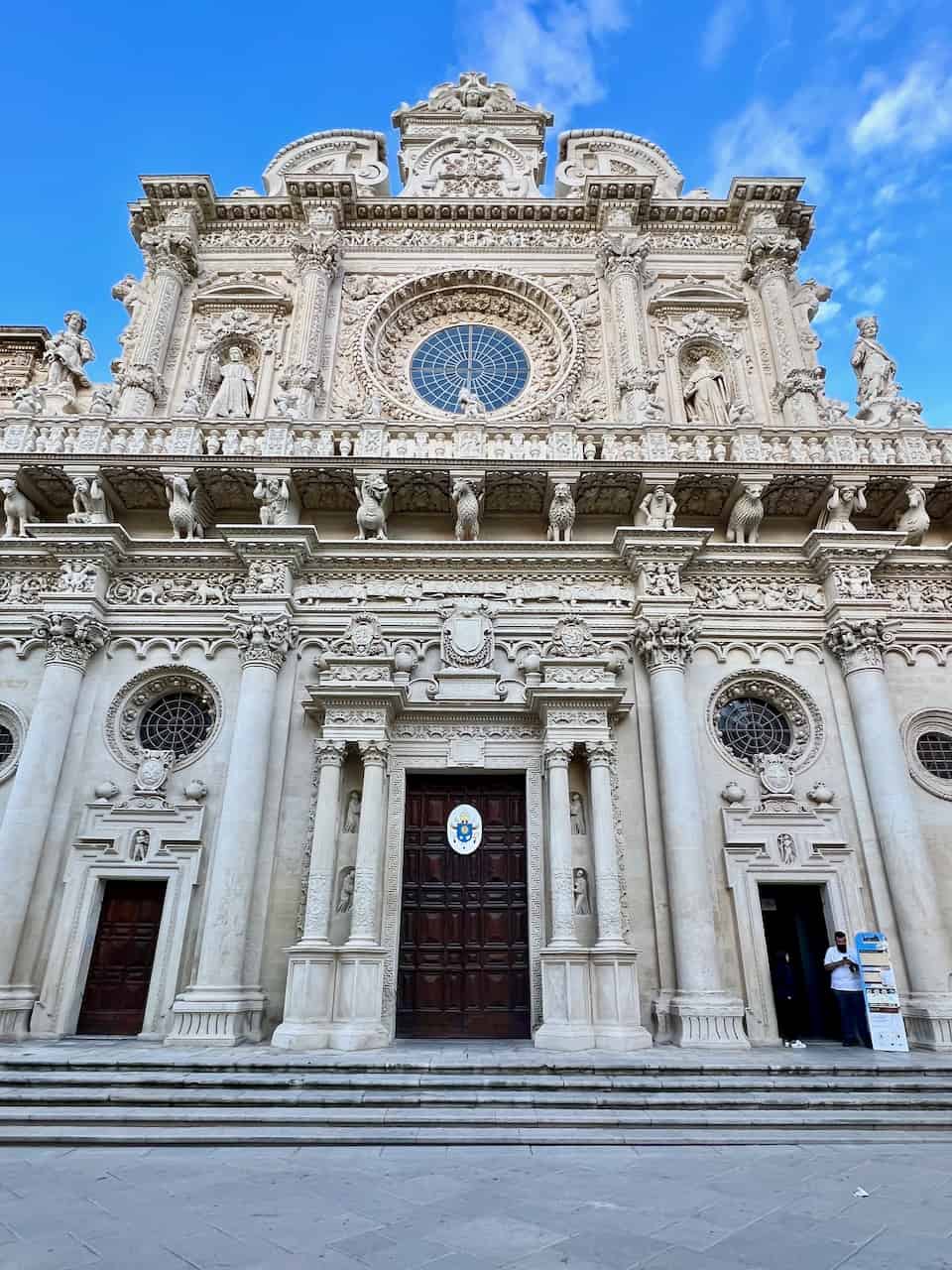
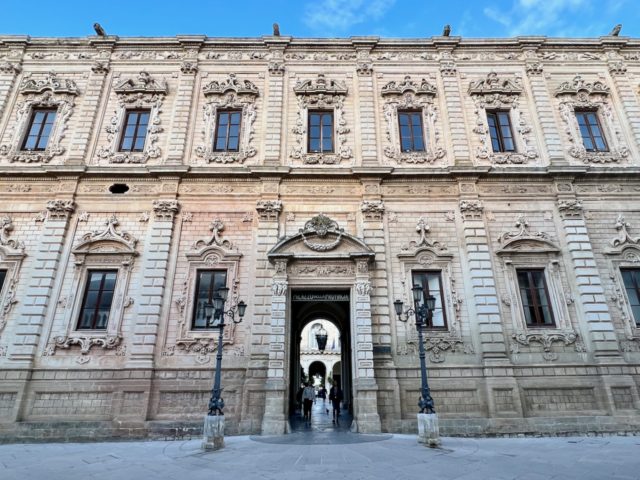
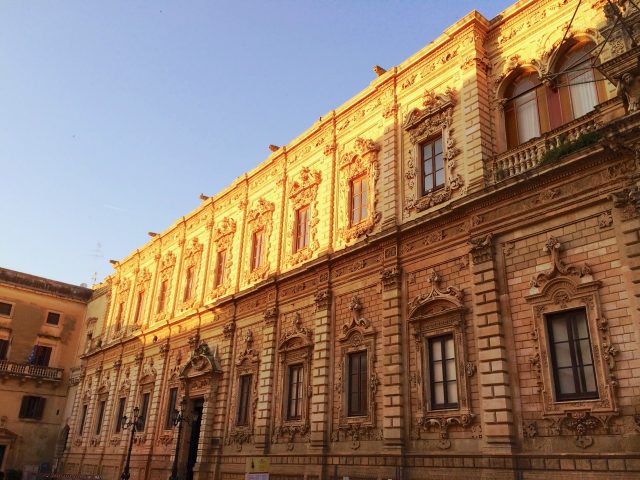
Porta Napoli
From the Palazzo della Provincia, head north and turn left on either Via Idomeneo or Via Principi di Savoia and continue to Porta Napoli. One of the three historic gates of Lecce, the 16th century Porta Napoli is certainly the most imposing.
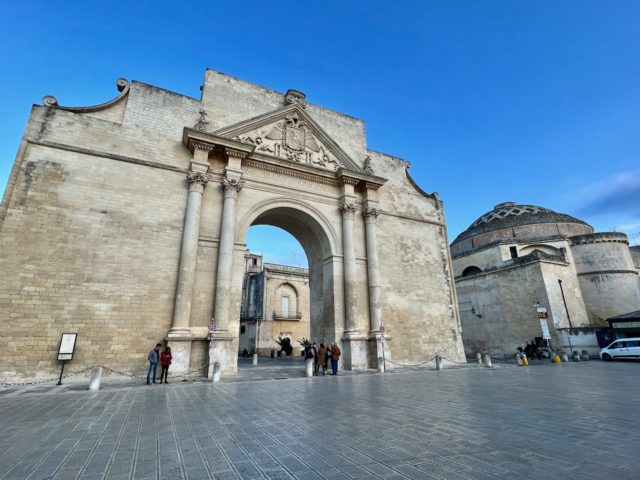
Adjacent to Porta Napoli, you’ll notice a building with a large dome. This is the Chiesa di Santa Maria della Porta. It’s worth having a peek inside to see its impressive dome.
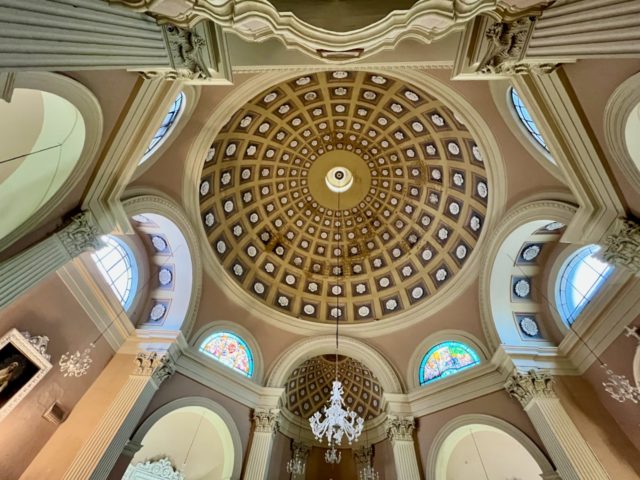
Obelisk and Chiesa dei Santi Niccolò e Cataldo
If you have time, continue from Porta Napoli to the Monumental Cemetery of Lecce, past the Lecce Obelisk. On the cemetery grounds is another stunning church: Chiesa dei Santi Niccolò e Cataldo. This 12th/13th century church is perhaps one of the oldest and most unusual in Lecce as it combines Baroque with touches of Gothic and Moorish elements. Inside, you’ll find beautiful frescoes and elaborate ceilings. A definite must-visit for art historians!
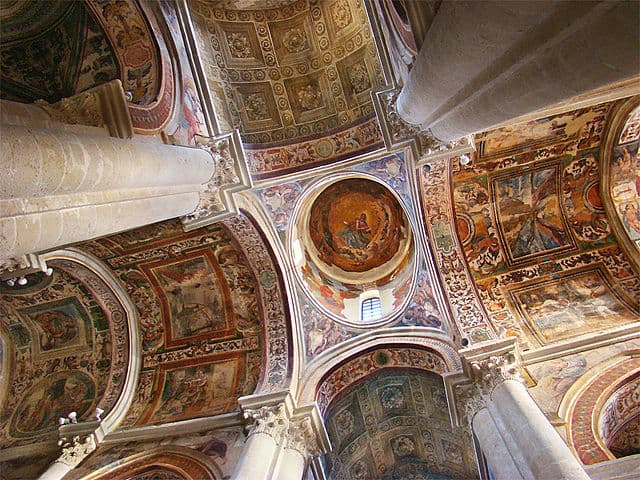
Piazzetta Panzera
From Porta Napoli, head south along Via Giuseppe Palmieri. Stop at the Palazzo Palmieri to admire its beautiful exterior. Further up, you’ll pass Piazzetta Panzera, a strikingly beautiful square with three towering palm trees.
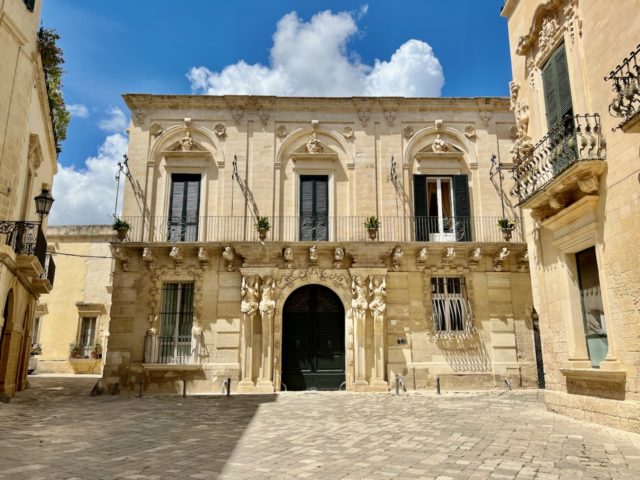
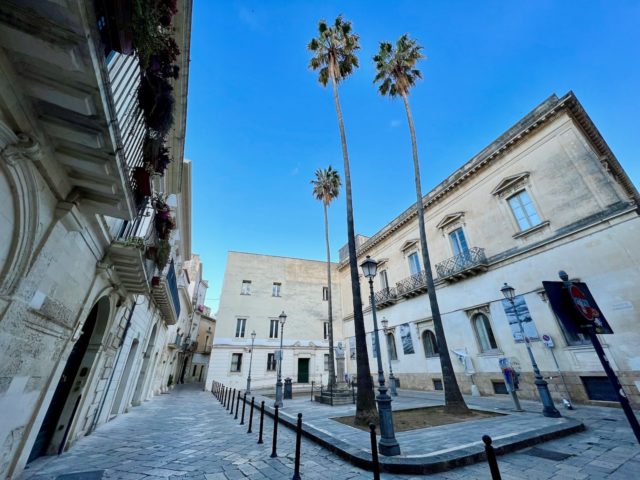
Read about a fantastic Lecce cooking course
Piazza del Duomo (Cathedral Square)
Your next stop is the majestic Piazza del Duomo. This square is home to Cattedrale di Maria Santissima Assunta e San Oronzo (or rather, the Cathedral) and the Campanile del Duomo (Cathedral bell tower), the tallest tower in Puglia.
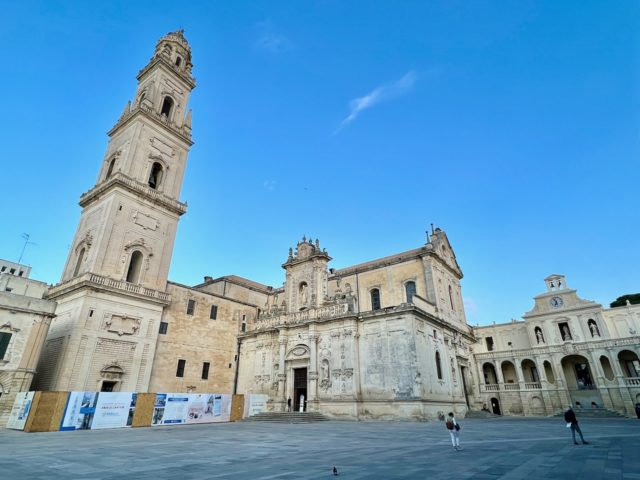
The 12th century Cathedral features an elaborate Baroque façade and a nave with twelve side chapels. The bell tower, constructed in the 17th century, is 70 meters tall and offers views as far as the Adriatic Sea and the mountains of Albania on clear days. Look carefully and you’ll notice that it’s slightly leaning.
Porta Rudiae
From Piazza del Duomo, continue west along Via Giusseppe Libertini. At the end of this vibrant street, you’ll find the modest but no less impressive Porta Rudiae, the third of the city’s three historic gates.
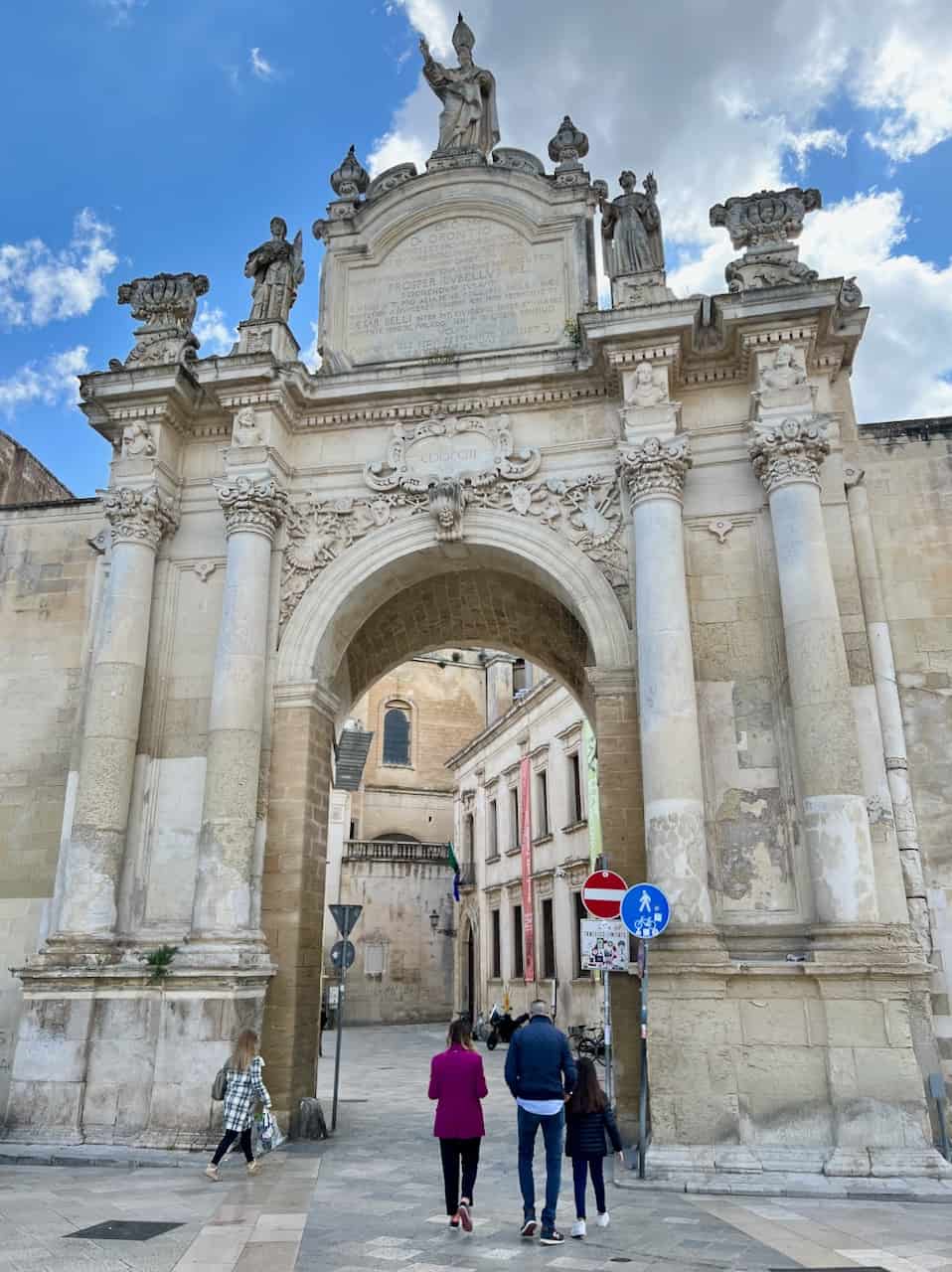
Next to it stands the resplendent Basilica del Rosario e di San Giovanni Battista. One of Lecce’s most beautiful churches, this 17th century basilica has a rich Baroque exterior with two spiral columns and a statue of St. Dominic. Inside, you’ll find an ornate interior with many fascinating details. This church is another must-visit for art historians!
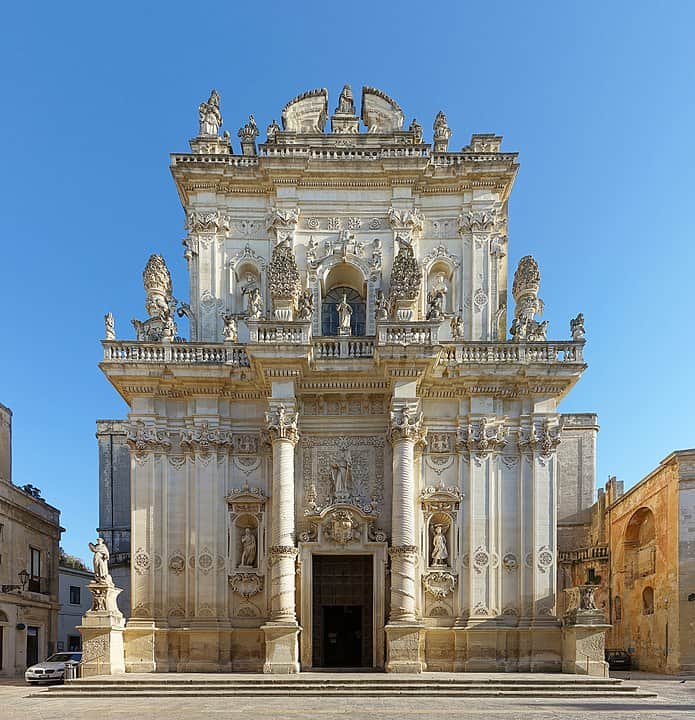
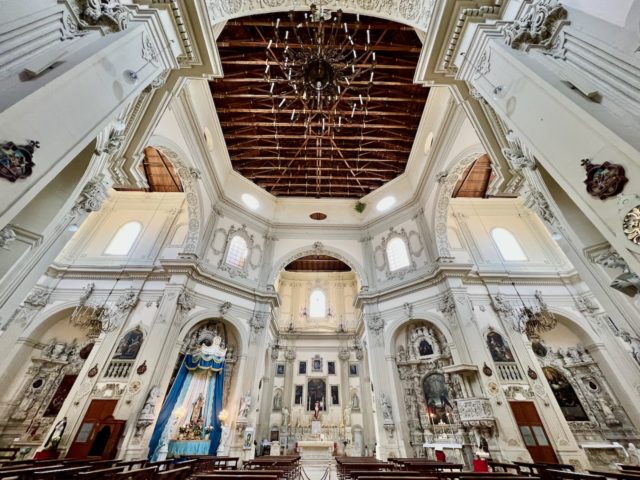
If you love browsing around local markets, visit the nearby Mercatino Porta Rudiae. There’s also a stall there that sells delicious roast chicken!
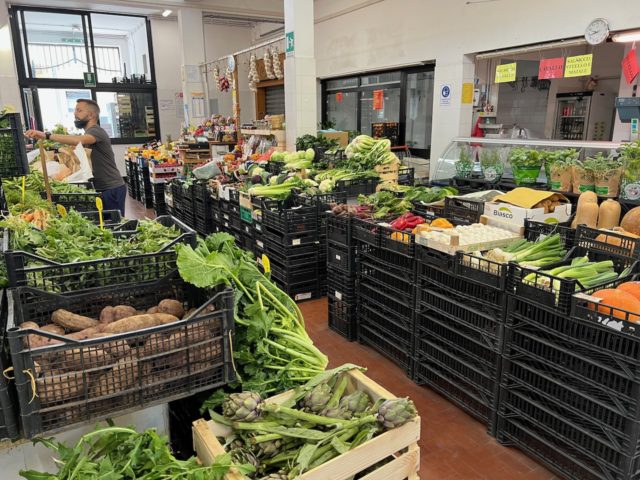
How to get to Lecce
There are two international airports in Puglia: Bari and Brindisi. Lecce is located about a two-hour drive from Bari Airport and about 40 minutes from Brindisi Airport. In addition, there are train services from Bari and Brindisi. I recommend visiting Lecce as part of a broader Puglia road trip. As there are many things to see in Lecce, I recommend spending 2-3 nights in the city.
Where to stay in Lecce
There are several gorgeous accommodations in the city I can recommend such as Palazzo de Noha, Pollicastro Boutique Hotel, Dimora Charleston and Palazzo Lecce. Search for hotels in Lecce (Booking.com).
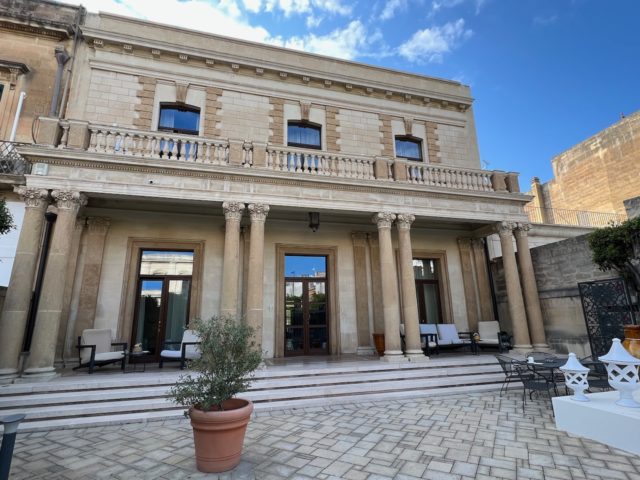
Where to eat in Lecce
Lecce is a great place to indulge yourself in Puglian cuisine. I recommend Crianza (Via Principi di Savoia, 64) and Alle Due Corti (Corte dei Giugni, 1) for local specialties, great wines and wonderful service. For steak lovers, check out Tabisca “il Vico dei Tagliati” (Via Dietro Ospedale dei Pellegrini, 29).
For something lighter, try L’angolino di Via Matteotti (Via Giacomo Matteotti, 31) which serves some of the best puccia (a sandwich made of wood-fired pizza dough typical of the Salento region) in Puglia.











More Stories
My 50th birthday celebrations in Amsterdam
Mumford Company Completes Sale of Two Limited-Service Hotels
Hevy Workout App Review: The up-and-comer taking the Fitness World by Storm (2022) incl. Discount Code